Understanding Marijuana Abuse
Learn about marijuana abuse & addiction
Often called weed, pot, or dope, marijuana is one of the most commonly used drugs in the United States. It is normally smoked, brewed into a tea and drank, or eaten after being prepared into foods like baked goods. Marijuana tends to cause relaxation, elevated mood, and increased appetite, but it can also cause paranoia and negative feelings. It is made from the leaves of the cannabis plant, and its active ingredient is THC, or delta-9-tetrahydrocannibinol.
Although many people who use marijuana believe the drug is safe, the unfortunate truth is that marijuana can have harmful and sometimes cause permanent negative effects on a person’s body. Marijuana is described as a gateway drug because people who use it will often begin experimenting with other drugs as well. Despite the dangers of marijuana abuse and the drug’s addictive nature, many people continue using it. Thankfully, treatment is available to help those addicted to marijuana gain freedom from their substance abuse.
Statistics
Statistics for marijuana abuse
According to a 2013 survey cited by the National Institute on Drug Abuse (NIDA), marijuana is the most commonly used illicit drug in the U.S., with almost 20 million people having used this substance in within 30 days of the survey. It is used by over 80 percent of illicit drug users. Marijuana is also dangerous. In 2011, there were 456,000 emergency room visits during which marijuana was mentioned. Despite a common perception that marijuana is not addictive, about 9 percent people who use it become addicted. This number increases to 25 to 50 percent among daily users. In addition, according to NIDA, marijuana use can cause a person’s IQ to drop up to 8 points.
Causes & Risks
Causes & risk factors of marijuana abuse
Experts believe that both genetics and environment play a role in determining a person’s risk of marijuana addiction. Consider the following:
Genetic: A substantial body of literature has suggested a link between genetics and risk of developing a substance use disorder. People with family members who abuse marijuana are more likely to abuse the drug themselves. In addition, studies on identical twins have supported the hypothesis that genes affect an individual’s risk of marijuana addiction.
Environmental: While genes can determine a portion of someone’s risk of substance use, environment also plays a role. Being in an environment with other marijuana users, whether friends or family, increases a person’s chance of developing a marijuana addiction. Unsurprisingly, the more readily available marijuana is, the more likely a person is to begin using it. In addition, exposure to trauma or chronic stressors, like poverty or violence, is associated with a higher chance of marijuana use.
Risk Factors:
- Family history of mental illness or substance use
- Personal history of mental illness or substance use
- Age (most people who begin abusing marijuana start before age 30)
- Experiencing peer pressure to use marijuana
- Having poor coping skills
- Experiencing chronic stress
Signs and Symptoms
Signs & symptoms of marijuana abuse
The signs and symptoms of marijuana abuse vary according to one’s personality and length and extent of abuse. However, some common signs and symptoms include the following:
Behavioral symptoms:
- Possessing drug paraphernalia
- Unexplained absences from work or school
- Decline in academic or occupational performance
- Change in peer groups
- Periods of uncontrollable laughter
- Lying or stealing
Physical symptoms:
- Increased appetite
- Lethargy
- Fatigue
- Poor attention to hygiene
- Changes in weight
- Disheveled appearance
- Persistent cough
- Impaired coordination
- Bloodshot or glassy eyes
Cognitive symptoms:
- Paranoia
- Poor memory and concentration
- Decreased attention
- Learning difficulties
- Disorganized thought processes
- Poor judgment or decision-making
Psychosocial symptoms:
- Lack of motivation
- Anxiety
- Depression
- Social withdrawal
- Irritability or agitation
- Loss of interest in activities one used to enjoy
Effects
Effects of marijuana abuse
Without treatment, continued abuse of marijuana can have severe, and sometimes permanent, negative long-term effects. These include:
- Elevated risk of cancer
- Poor occupational or academic performance
- Job loss or academic expulsion
- Chronic unemployment
- Financial problems
- Cardiopulmonary problems
- Lung infections
- Permanent cognitive deficits
- Sexual dysfunction
- Strained or broken relationships
- Abuse of other substances
- Elevated risk of suffering from the symptoms of a mental illness or illnesses
Co-Occurring Disorders
Marijuana abuse and co-occurring disorders
Those who use marijuana sometimes do so as a way to cope with stressors or the symptoms of mental health problems. Some common co-occurring disorders include:
- Attention-deficit/hyperactivity disorder (ADHD)
- Bipolar disorder
- Depressive disorders
- Anxiety disorders
- Post-traumatic stress disorder
- Obsessive-compulsive disorder
- Personality disorders
- Additional substance use disorders
Withdrawal & Overdose Effects
Effects & symptoms of withdrawal from marijuana
If a person uses marijuana for an extended period of time or uses large amounts of the drug, that person’s body may come to depend on the drug in order to function. Should that person then stop using marijuana, his or her body must readjust to working without the drug. This extremely uncomfortable readjustment is known as withdrawal and can include the following symptoms:
- Intense cravings for marijuana
- Dizziness
- Loss of appetite
- Impotence
- Poor concentration
- Mood fluctuations
- Agitation or irritability
- Feeling shaky or uneasy
- Insomnia
- Anxiety











